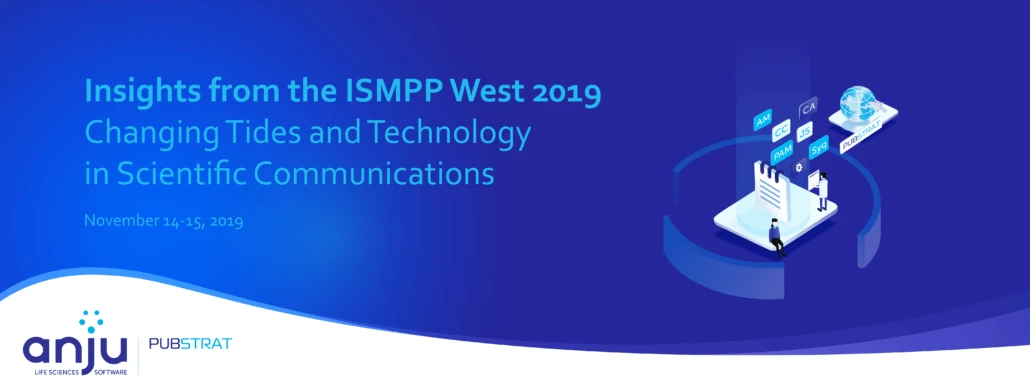Changing Tides and Technology in Scientific Communications
14-15 Nov 2019 By Rachel Sheldon | Customer Success Manager, Medical Affairs Division
Recently, Anju Software sponsored, exhibited and attended the ISMPP West 2019 meeting in San Diego, California. Kelly Malloy, Director of Business Development and I were both in attendance at the conference. ISMPP West is a wonderful complement to the larger annual International Society for Medical Publication Professionals (ISMPP) meeting held in Washington DC in the spring. In its second year, the ISMPP West 2019 meeting focused on Changing Tides and Technology in Scientific Communications. As exhibitors, we were able to engage with existing and potential customers on this topic and present PUBSTRAT and Anju as leaders in Scientific Communication technology.
Though exhibiting, I was able to attend the session entitled “Medical Affairs and Publication Team Coordination to Maximize Publication Use at the Point of Scientific Exchange”. The first question posed by the speaker was “How can we make publications more valuable?” It is no secret that it is quite expensive to produce medical publications. The average cost for an agency to assist with developing a manuscript is $30,000. This does not include the time for authors, reviewers and pub leads to do their part as well. Dollar amount aside, it seems that organizations such as Astellas and Amgen are trying to maximize the value of publications overall by combining resources and working together across functions. These functional areas within pharma include Publication teams, MSL teams and Medical Information.
By communicating with one another on needs, these groups can use a single publication to serve many purposes (standard response letters, communications with KOLs, etc.) While listening, I started thinking about how technology could help these groups work together more efficiently and further this mission. Within the Anju portfolio, our software applications serve each one of these different functional areas within pharma. What if these systems all talked to each other? When a publication is complete in PUBSTRAT, it could automatically be sent to IRMS for use by the med info team. Perhaps they could also push to OpenQ for MSL’s in the field to discuss with opinion leaders. Getting back to the question of value of publications, having the ability to tag and track these publications across systems and their use, a company would be able to generate insights into how many times a publication was referenced in response letters, for example.
This was a great learning experience and affirmed what we have been proposing as the Anju value proposition to pharmaceutical companies. I am looking forward to more sessions like this and excited the ISMPP community is driving conversations around data driven analytics and technology in medical affairs.

